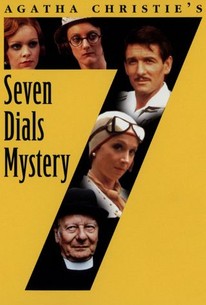

where misery clings to misery for a little warmth, and want and disease lie down side-by-side, and groan together. The poet John Keats described the area as the last resort for the poor and the ill. The stranger who finds himself in the Dials for the first time.at the entrance of Seven obscure passages, uncertain which to take, will see enough around him to keep his curiosity awake for no inconsiderable time. In his collection Sketches by Boz, Dickens remarks,

streets and courts dart in all directions, until they are lost in the unwholesome vapour which hangs over the house-tops and renders the dirty perspective uncertain and confined. The area was described by Charles Dickens in 1835: By the 19th century, Seven Dials was among the most notorious slums in London, as part of the slum of St Giles. At one stage, each of the seven apex buildings facing the column housed a pub. This was not to be, and the status of the area gradually went down.

Īfter the successful development of the Covent Garden Piazza area nearby, Neale hoped that Seven Dials would be popular with wealthy residents. This layout was chosen to produce triangular plots, in order to minimise the frontage of houses to be built on the site, as rentals were charged per foot of frontage rather than by the square footage of properties. The sundial column was built with only six faces, with the column itself acting as the gnomon of the seventh dial. His plan had six roads converging, although this number was later increased to seven. The original layout of the Seven Dials area was designed by Thomas Neale during the early 1690s. In the 17th century, a local estate known as Cock and Pye Fields belonged to the Worshipful Company of Mercers, which, to maximise its income in the burgeoning West End, allowed building licences on what until then was open farmland near the developing metropolitan area. In the middle ages, the area was owned by the monastic hospital of St Giles which specialised in treating lepers, but it was expropriated by Henry VIII in 1537 and later passed into private hands. Seven Dials around 1836: illustration by George Cruikshank in Dickens' Sketches by Boz.


 0 kommentar(er)
0 kommentar(er)
